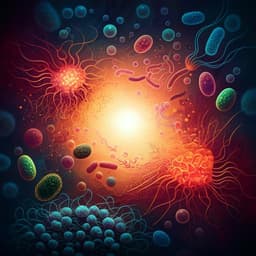
Engineering and Technology
Ferroelastic ionic organic crystals that self-heal to 95%
M. B. Al-handawi, P. Commins, et al.
This groundbreaking research reveals how anilinium bromide crystals can recover up to 49% of their integrity in seconds and an impressive 95% after 100 minutes! Thanks to ferroelastic detwinning and strong ionic bonding, these findings open new horizons for organic crystals in the field of durable optoelectronics, conducted by a talented team of researchers.
Playback language: English
Related Publications
Explore these studies to deepen your understanding of the subject.







